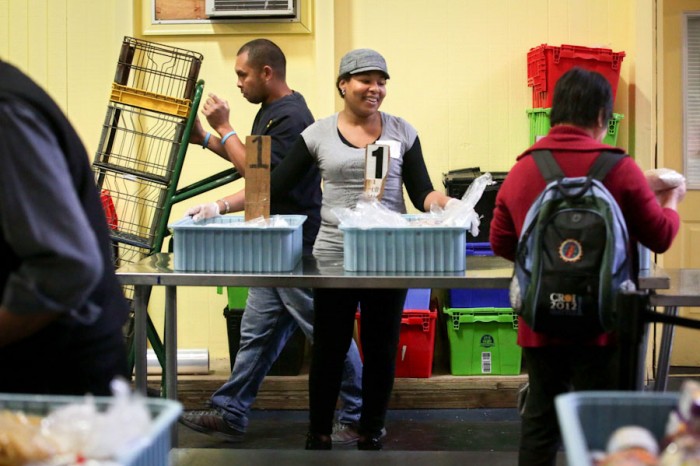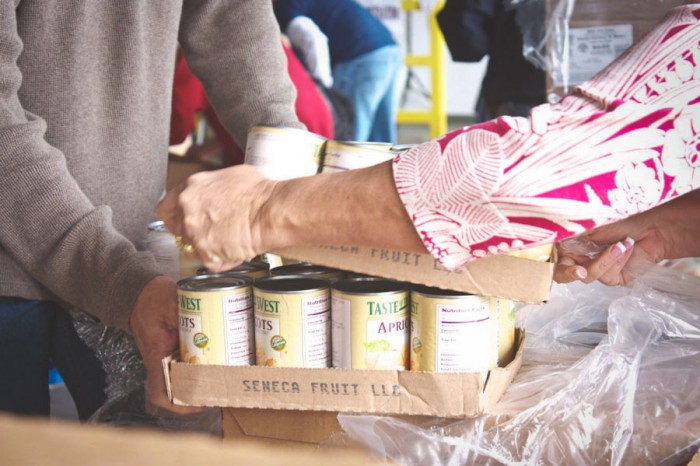
The world can be divided between those who have gone hungry and those who haven’t.
I haven’t, but I’ve spoken to many around the world who have — in rural Ethiopia, Iraqi refugee camps, on the streets of Kolkata — and their fear and desperation haunt me.
But you don’t have to travel far to encounter that desperation. In fact, I only had to go about mile from my apartment to Northwest Harvest’s Cherry Street Food Bank where, on Monday, a line up the block revealed not only the reality of local food insecurity, but also the impact of hunger on our city’s international population.
This month, the United States Department of Agriculture published a report finding that 14.3 percent of American households were “food insecure” in 2013 (defined by the USDA as having a consistent lack of access to “adequate, nutritious food”).
Hunger here in Washington state matches that national average (we rank 23rd in the nation). And while this is an improvement over the deep recession years, advocates say we have a long way to go, especially among immigrants and refugees.
“I would say 70 to 75 percent (of our clients) are international people,” said food-bank manager Anthony Brown who has been at Cherry Street for five years. “There’s Russian-speaking people and Somali-speaking people, Vietnamese, you never know. … But there’s all different kinds of people.”
It’s hard for Brown to say exactly where their recipients come from. Northwest Harvest doesn’t collect demographic information on food-bank users in order to avoid discrimination and to encourage use among those who might stay away if forced to show identification or share personal information — undocumented immigrants, for example.
But it was clear from the many languages spoken on the day I visited (most people I approached didn’t speak English) that a majority of their clientele are foreign-born.
Some I spoke with were trying to stretch shrinking benefits and insufficient paychecks.
“We don’t have enough money,” says Rhys Alipio, 18, looking into a black plastic bag full of potatoes, onions and oil collected from the bins behind him.
Alipio is originally from the Philippines and is now a U.S. citizen. He works full time at a catering business, but says it’s not enough to feed his mom, dad and two siblings, “The salary didn’t increase but the (bills) increase every year.”

Recent cuts to federal food-stamp programs in the past year — alongside the rising cost of living in our region — have increased need and turned many communities toward food banks, says Jesse Swingle, communications manager at Northwest Harvest.
Swingle says undocumented people may use the food bank because they are ineligible for government food aid like SNAP (the Supplemental Nutrition Assistance Program), but adds that a lack of education about government programs keep many eligible immigrant families from accessing benefits.
“We’ve heard stories from a lot of people that think they’re going to have to pay back any government assistance they might get,” says Swingle, citing a 2011 study that found food-stamp participation significantly lower among immigrant families.
And then there’s the fear that using government services might provoke anger.
“Sometimes it’s a sense that the country will rise up against you,” explains Swingle who says he’s been surprised by how pervasive this concern is among immigrant communities he works with, “that people will resent you for taking (food).”
Whatever the reasons for the use of food banks among immigrants, Cherry Street is trying to keep up with demand by seeking out volunteers with diverse language skills and addressing the culinary needs of different cultures (lettuce, eggplant and melon are universally popular, likewise rice and chicken).
When asked if Northwest Harvest — which became an established anti-hunger organization in the 1970s when it helped serve laid-off workers during the “Boeing bust” — is surprised to be serving such a global population, Swingle shrugs, “they’re here, there’s a need,” he says. “These are people it’s very hard to meet and say ‘you don’t deserve food.’ ”
And looking at the line stretching up the street, I had to agree.


Nice article. It is important for The Food Bank to see the grounds why people need to utilize our service.